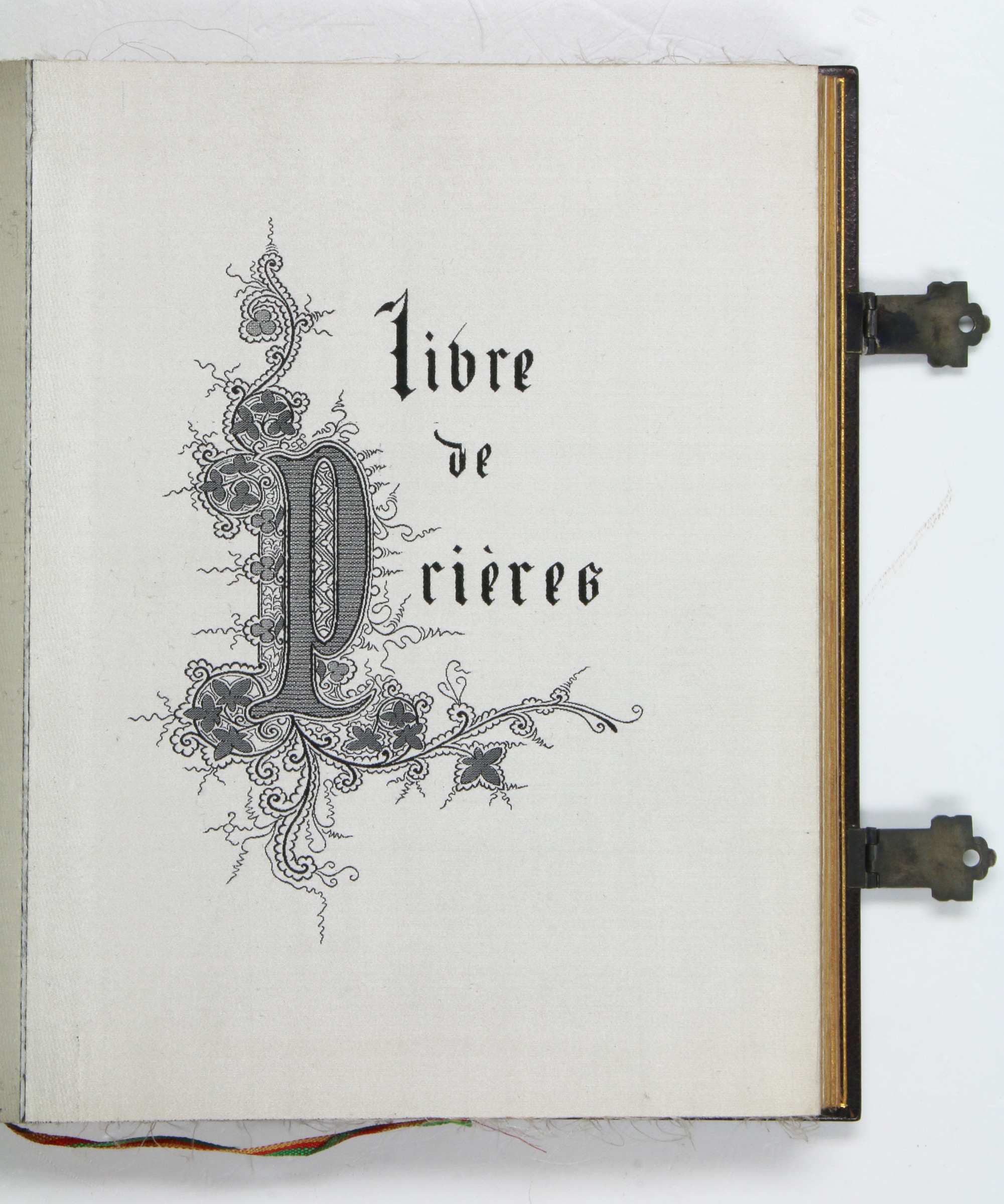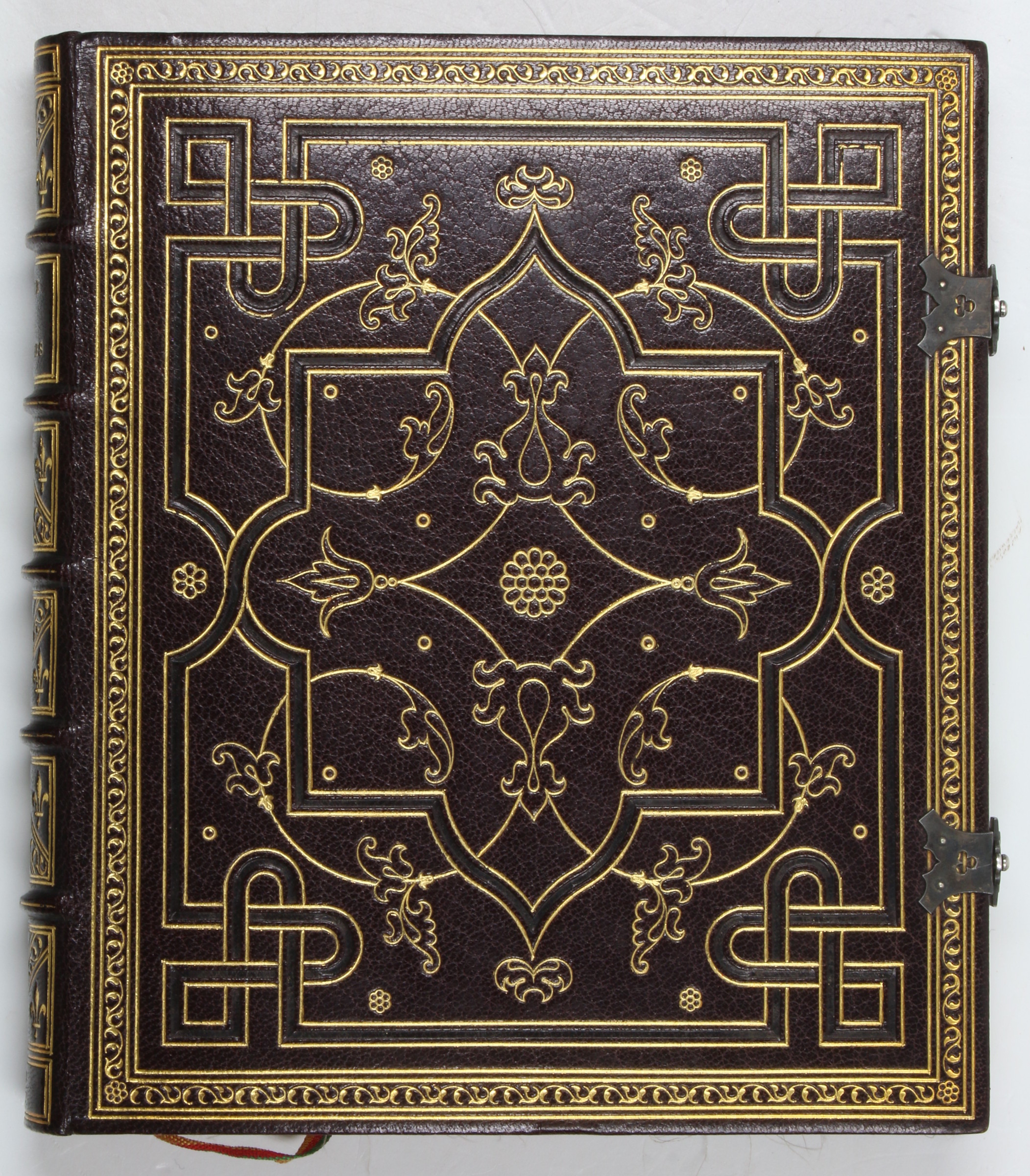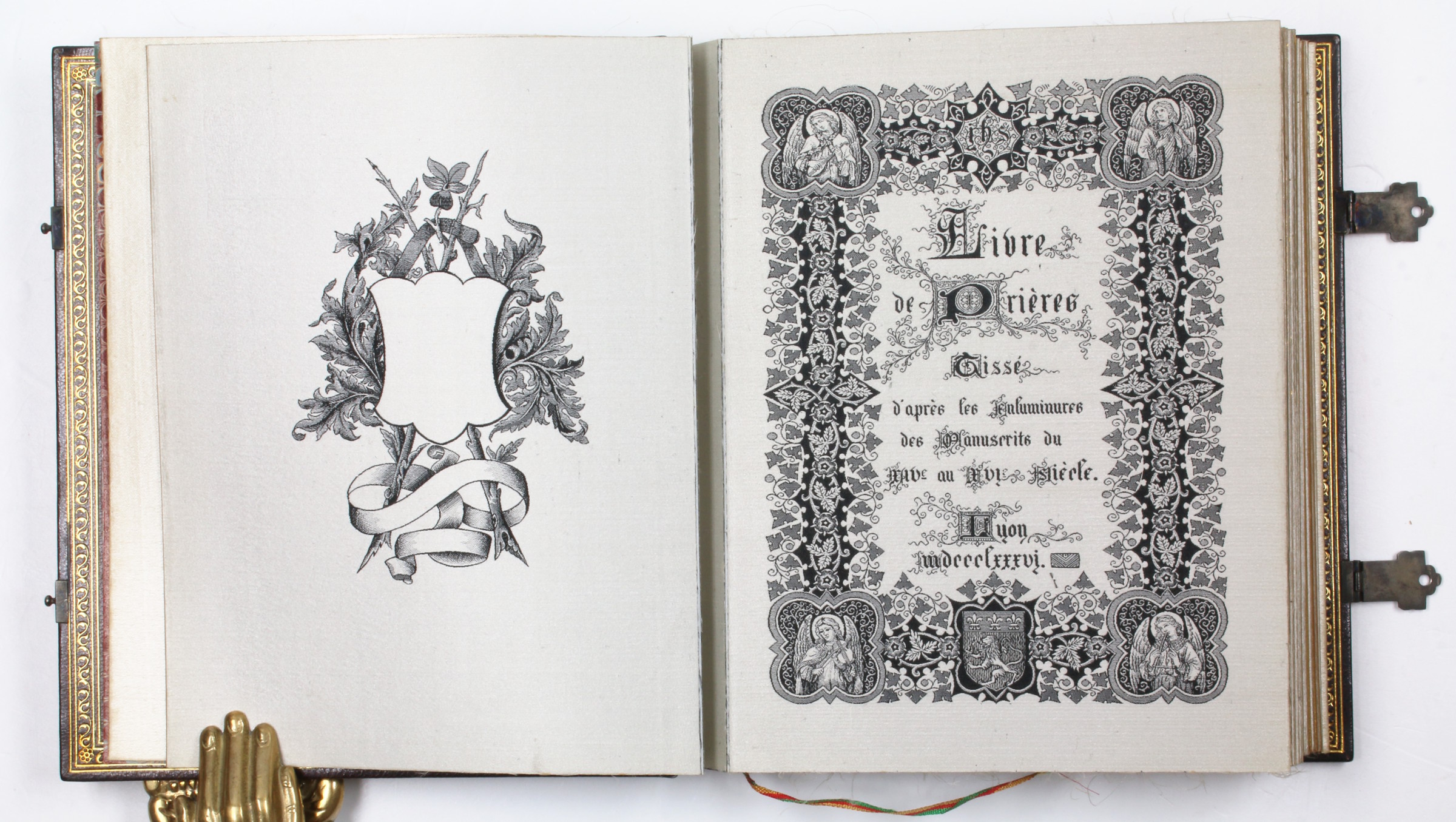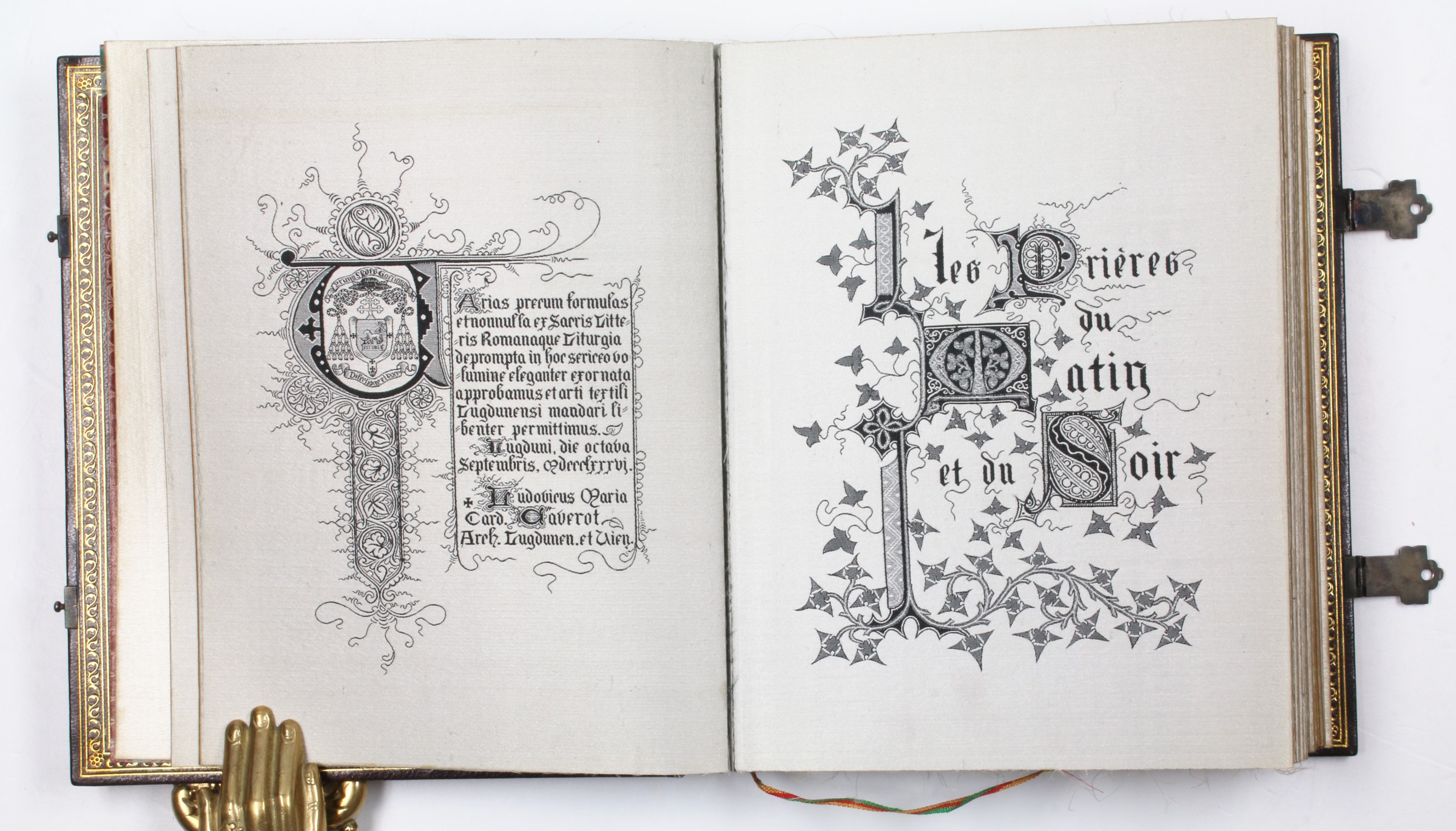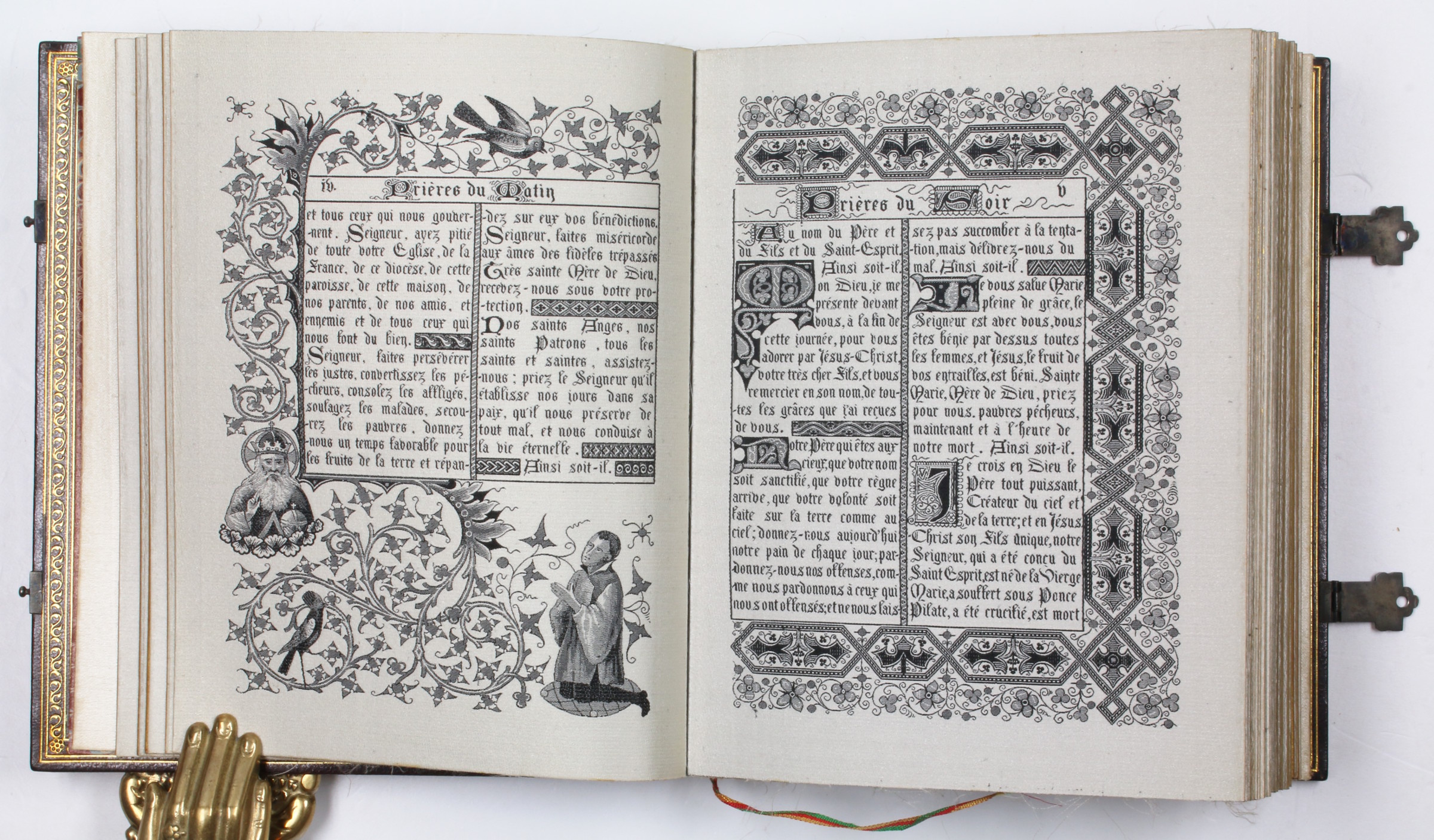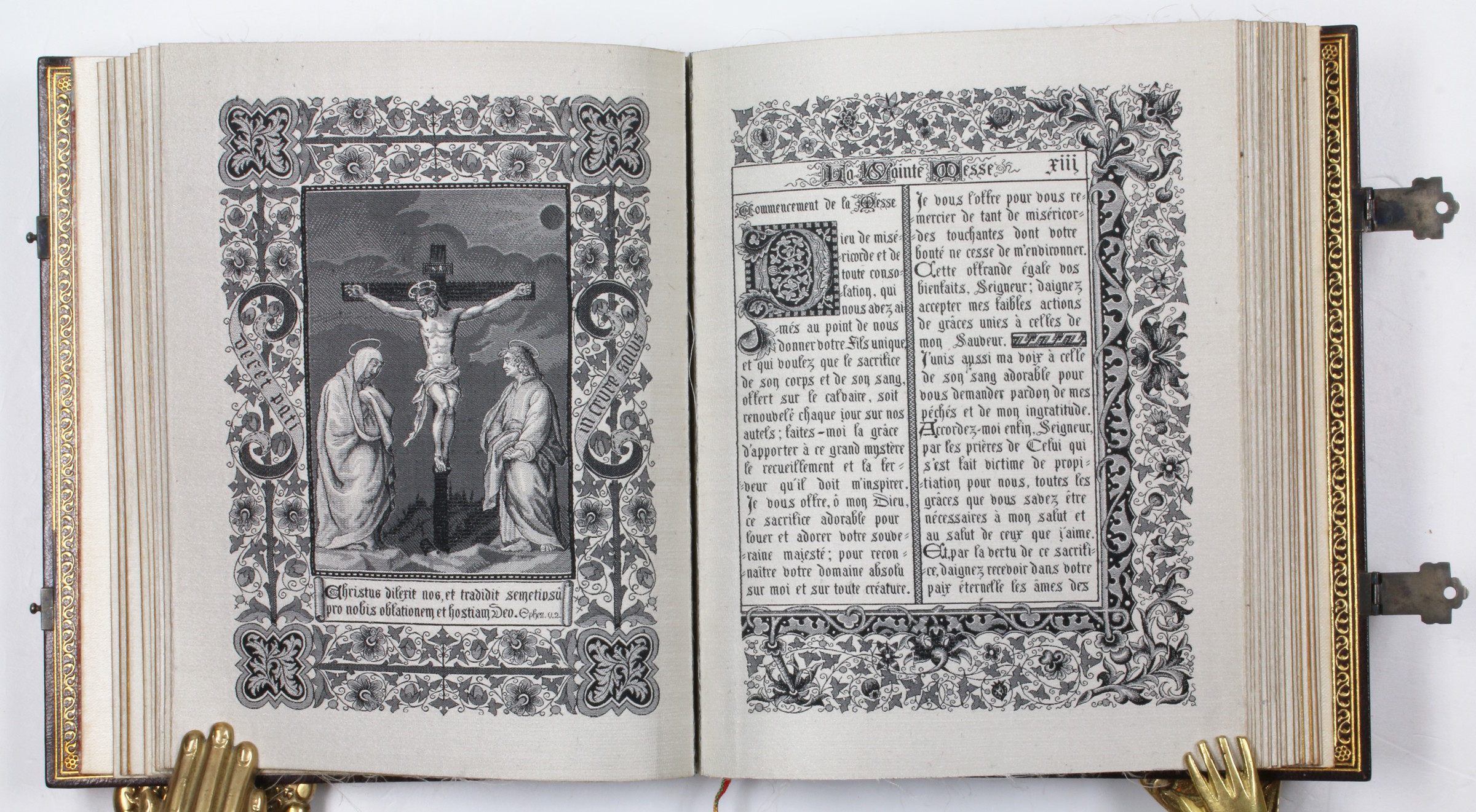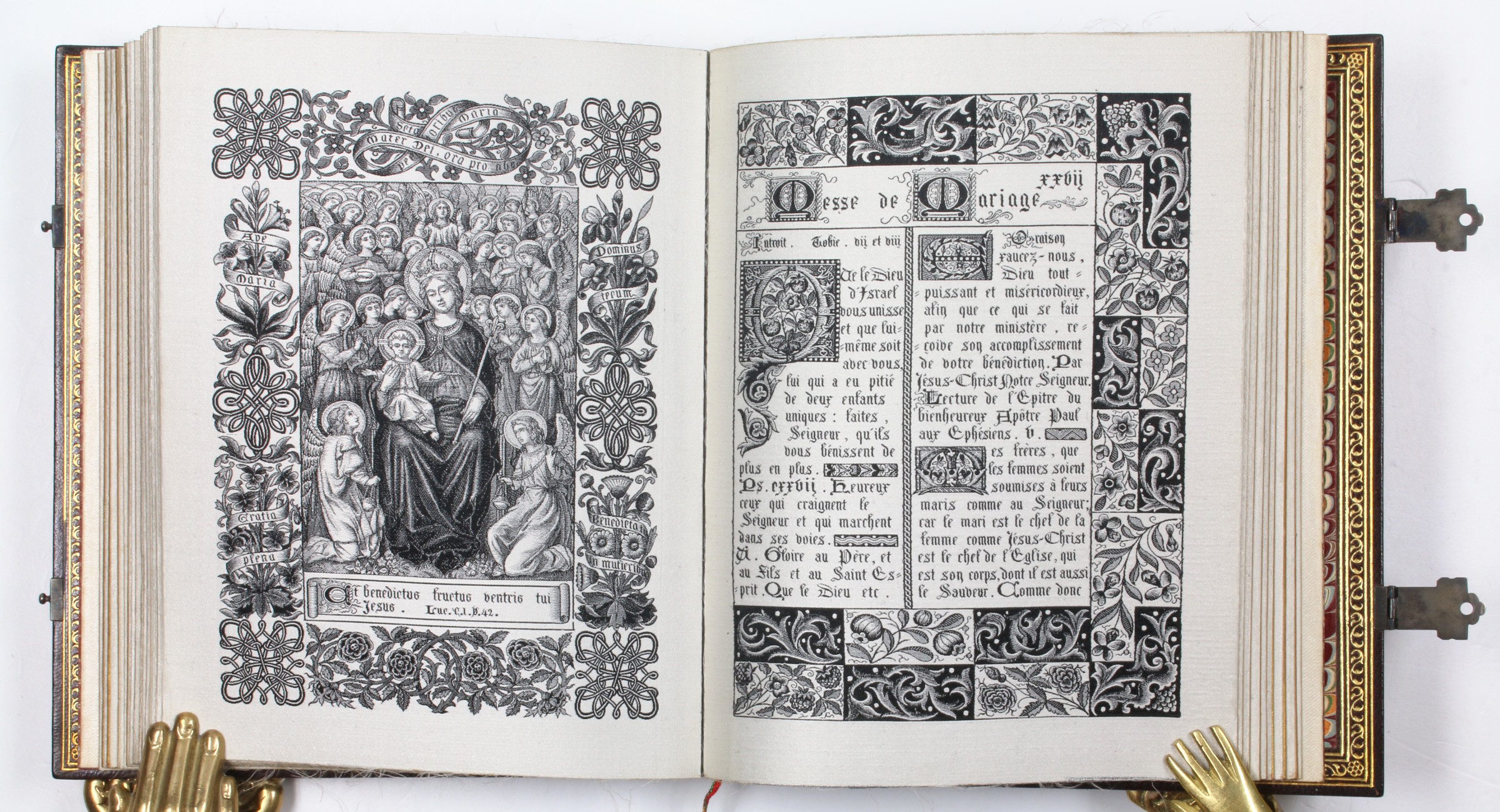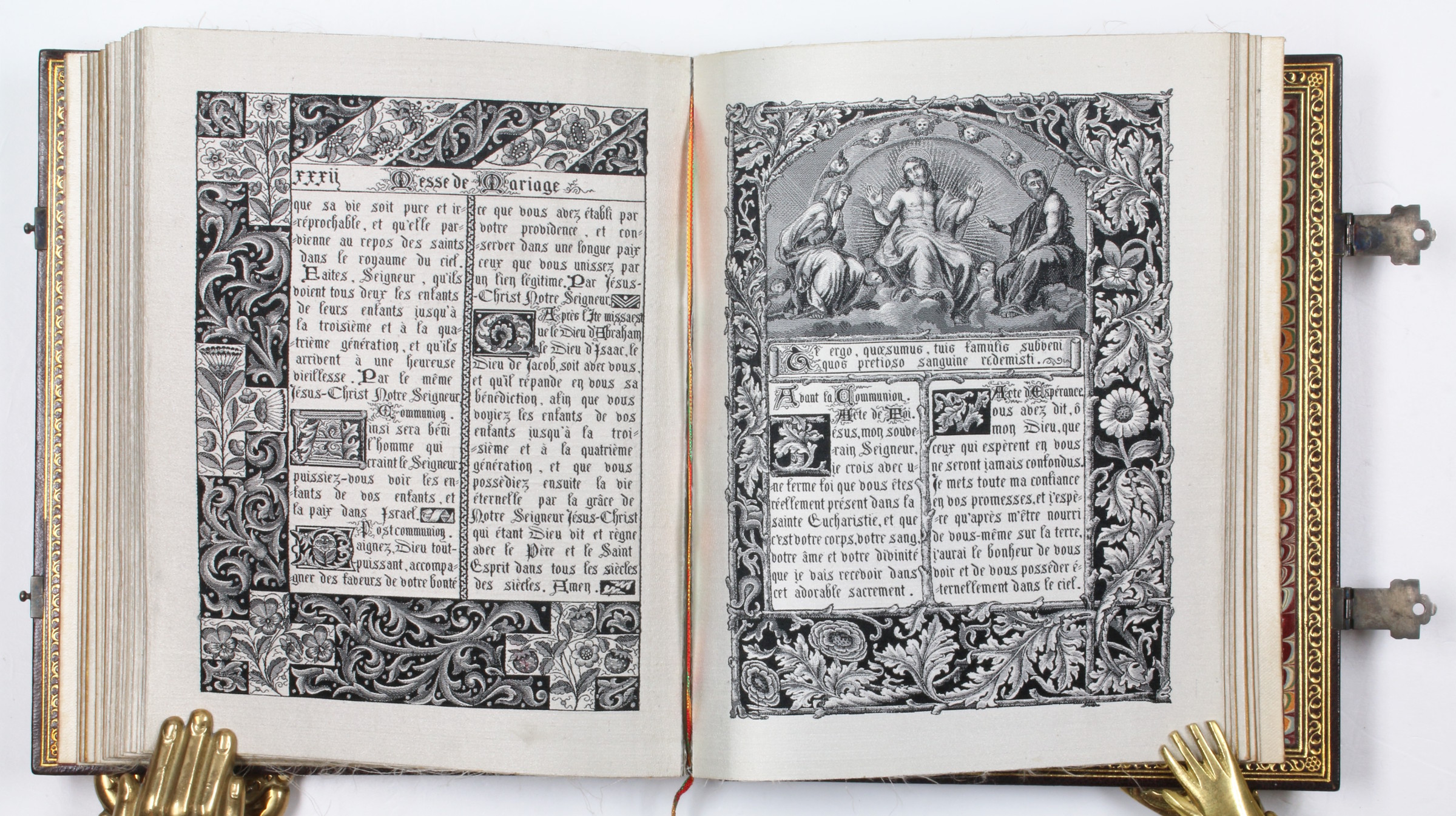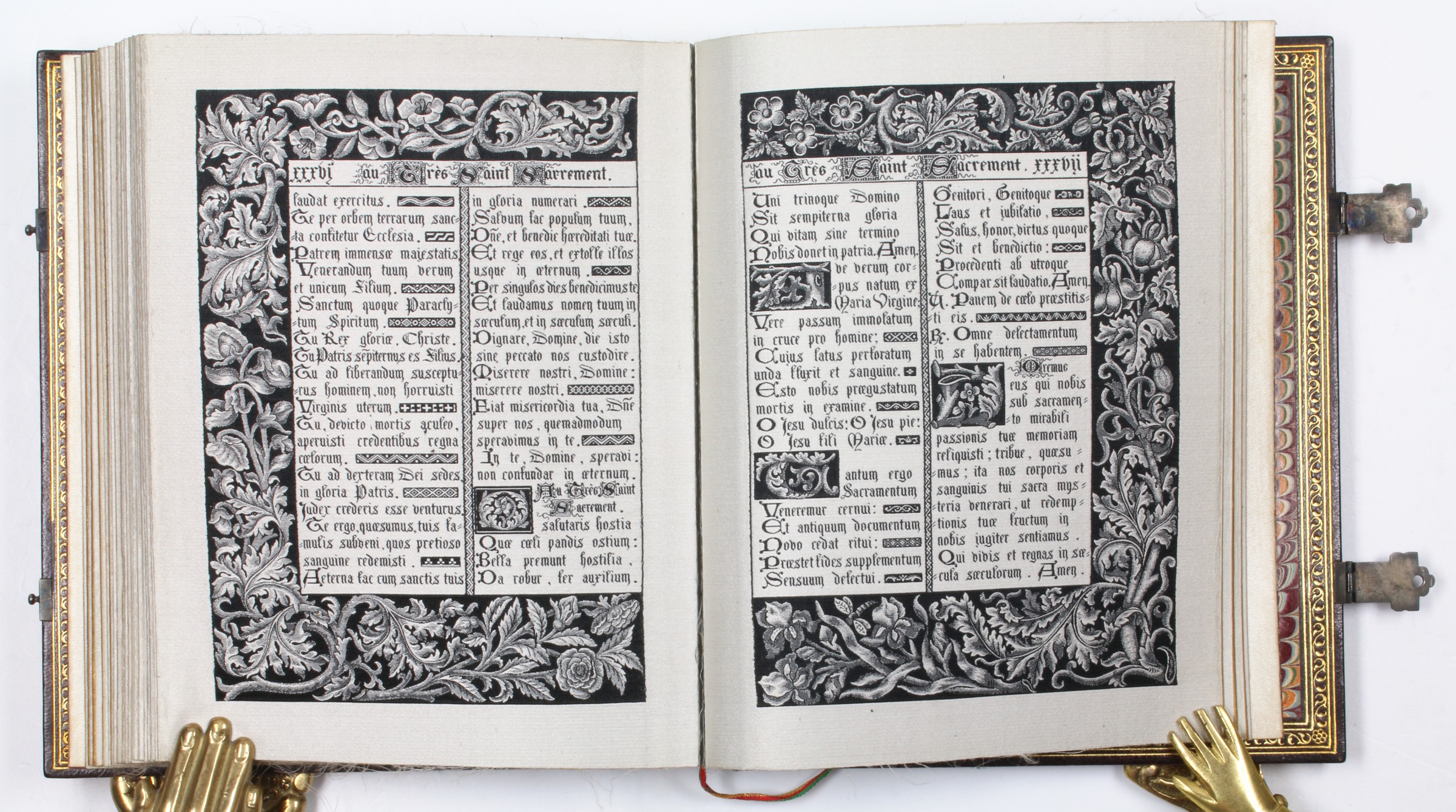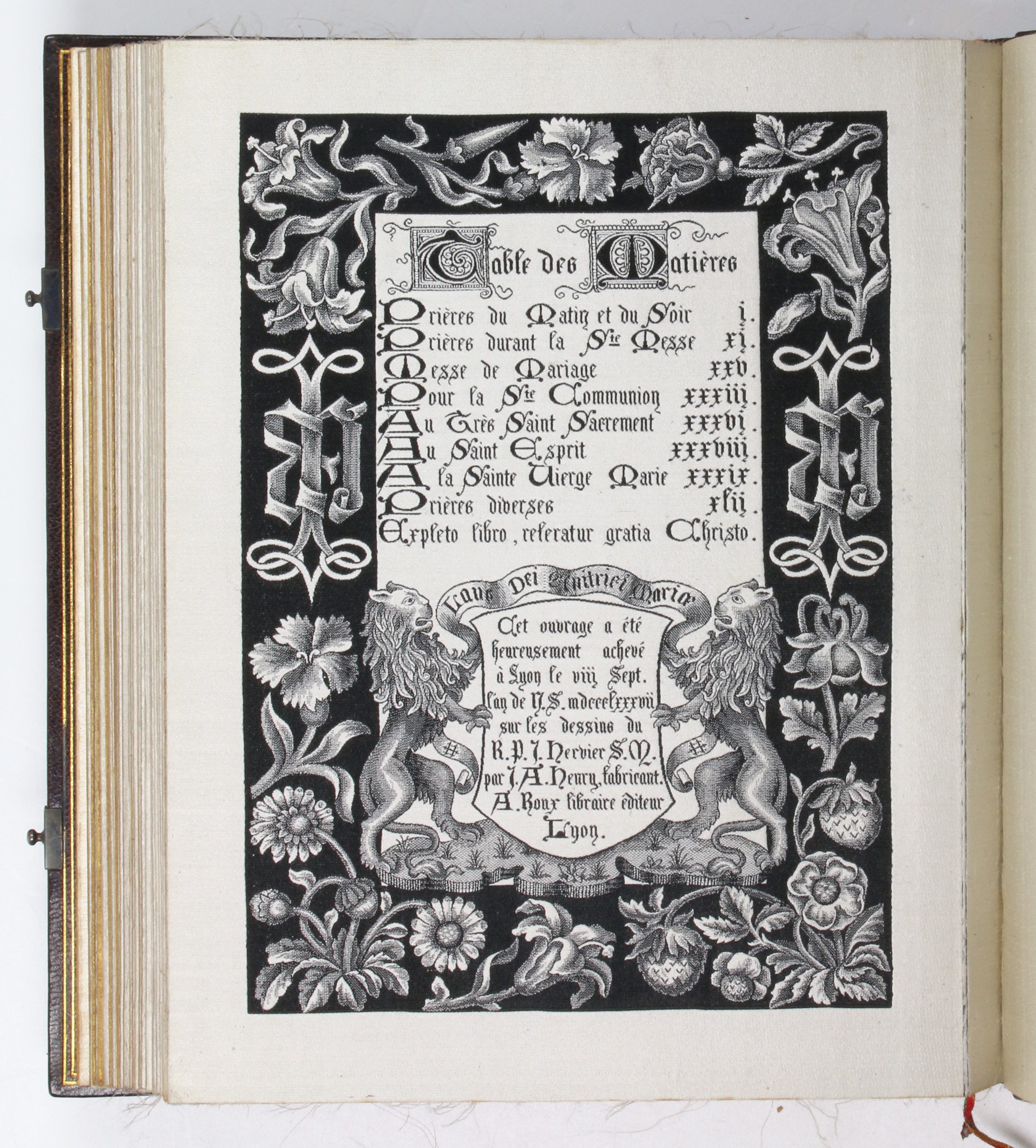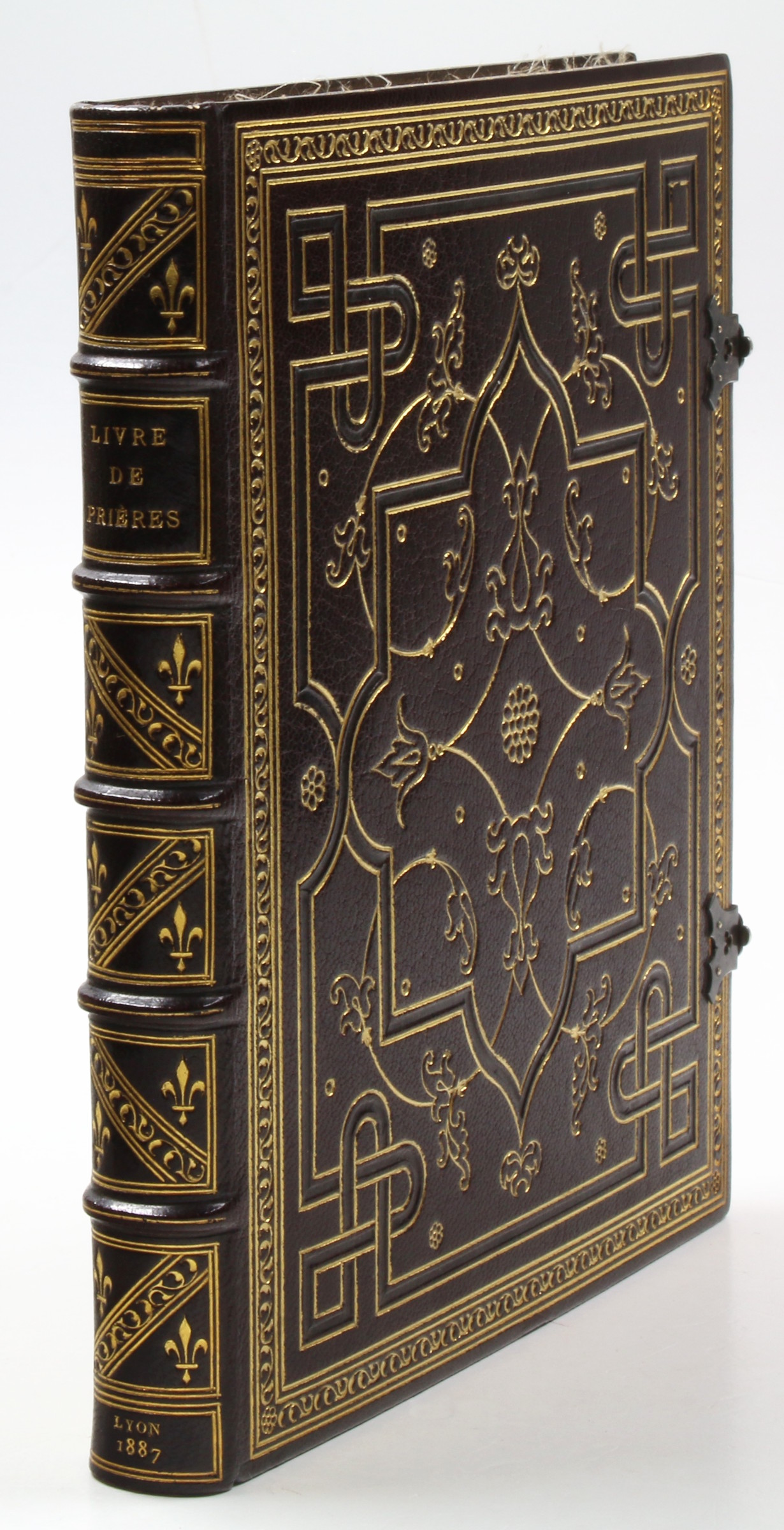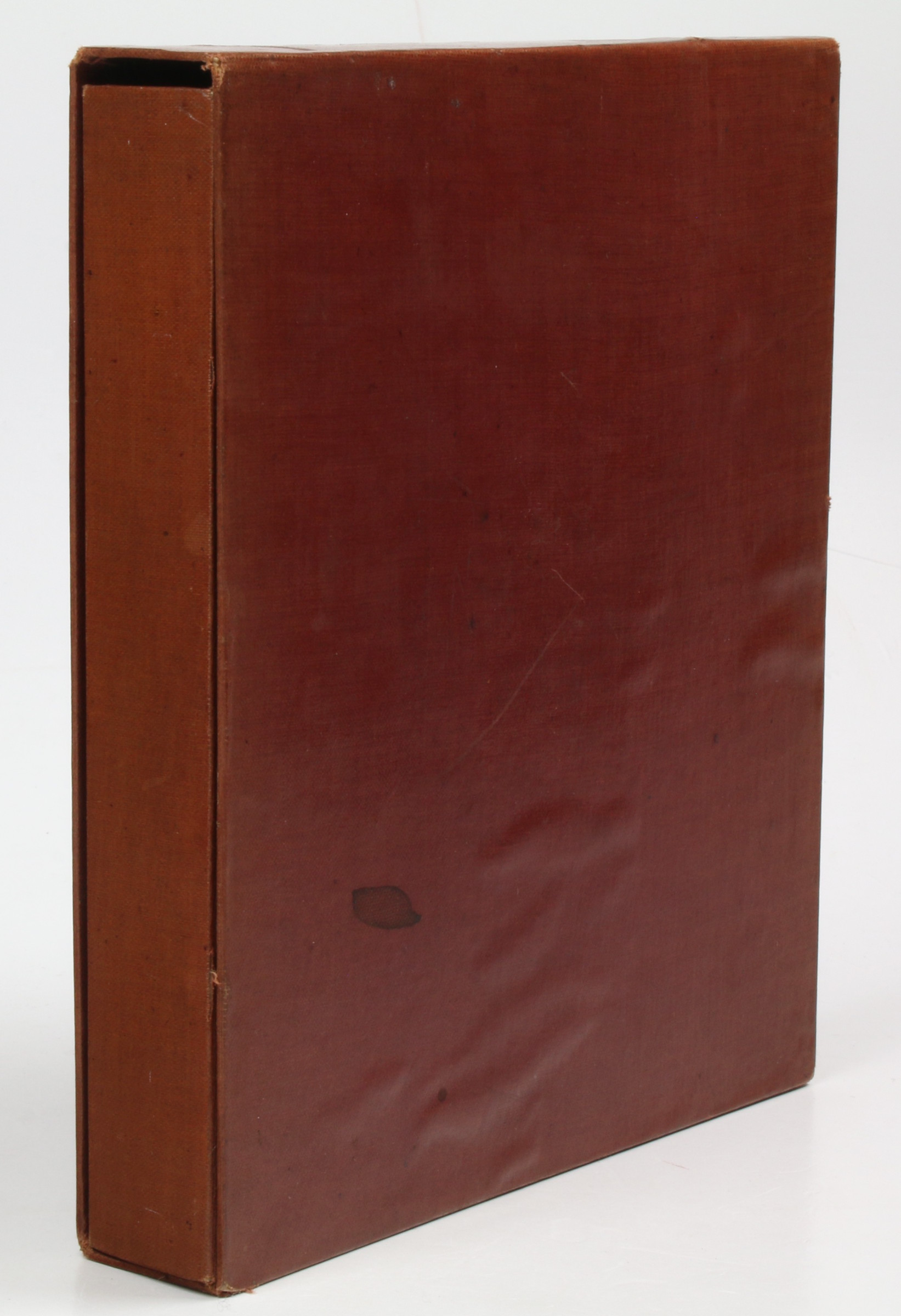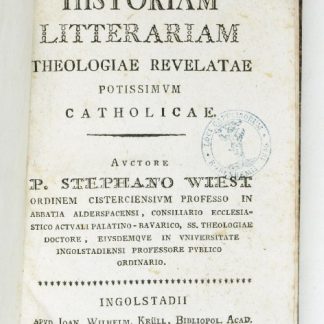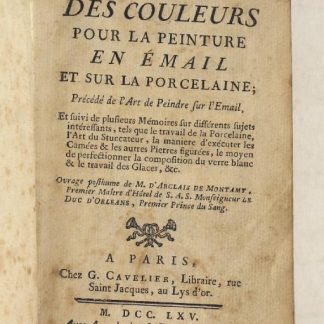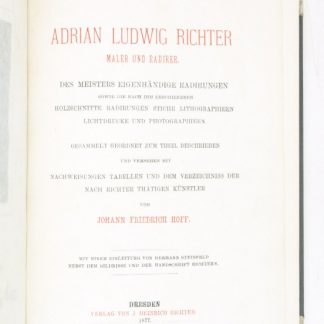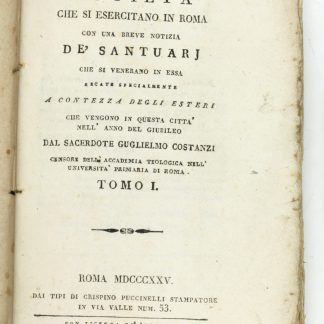The dawn of the computer age, in the form of a book
Livre de prières tissé d'après les enluminures des manuscrits du XIVe au XVIe siècle.
4to (156 x 176 mm). Woven grey on silver silk mounted on card. Fine contemporary full leather intricately ruled and decorated in gilt, all edges gilt, with two functional clasps. Housed in custom red cloth slipcase.
A technical feat of bookmaking, weaving, and scientific ingenuity. Only approximately fifty - and no more than sixty - copies of this book were produced over two years; each page is entirely woven from silver silk thread, programmed into the Jacquard loom using over 200,000 individual punch cards, making this one of the earliest examples of what would come to be known as computer programming. Twenty-one copies are currently listed in various entries on OCLC, placing nearly half in institutions. Of these, only five are outside the United States and only four in Europe; none are listed outside Europe or North America.
Considered the pinnacle of Jacquard weaving, the design for the silk prayer book was made by R. P. J. Hervier; the fifty-odd copies were then woven by J. A. Henry and subsequently published by A. Roux. Its prolific decoration, in the form of floral and illustrated borders, is based on distinct and recognizable manuscript illumination styles from the 14th to the 16th centuries. Immediately upon publication they were heralded as a particularly skillful engineering project, and of particular interest to bibliophiles. Paul Marais, assistant curator of the Mazarine Library, wrote in the 1889 Bulletin du Bibliophile:
"Ce livre est une oeuvre très remarquable comme exécution et comme choix de gravures, de lettres ornées et des encadrements. C'est une tentative extrêmement originale, et dont la réussite et la perfection constituent une oeuvre unique et en font le plus grand honneur au fabricant de lyon qui a entrepris cette immense tâche".
Today, the work's importance is felt in another field not often associated with the world of rare books: the history of the computer. By using punch cards, the Jacquard loom could be programmed to create a two-toned image in much the same way as the first computers used punch cards to store information. Indeed, this similarity is not coincidental: the inventor of the Analytical Engine, Charles Babbage, was well aware of the Jacquard looms and their ability to store programmes. This punch-card method can be followed in a direct line from French looms to the International Business Machine corporation (IBM)'s use of the punch card concept (though replacing the cards themselves with plugboards).
In strikingly excellent condition, with only the gentlest whisps of frayed edges to the bottom edge. Bright and clean, utterly unblemished, and housed in a fine binding.
Paul Marais, Bulletin du Bibliophile (Paris, 1889), pp. 163-166. Cf. OCLC 17892481.

